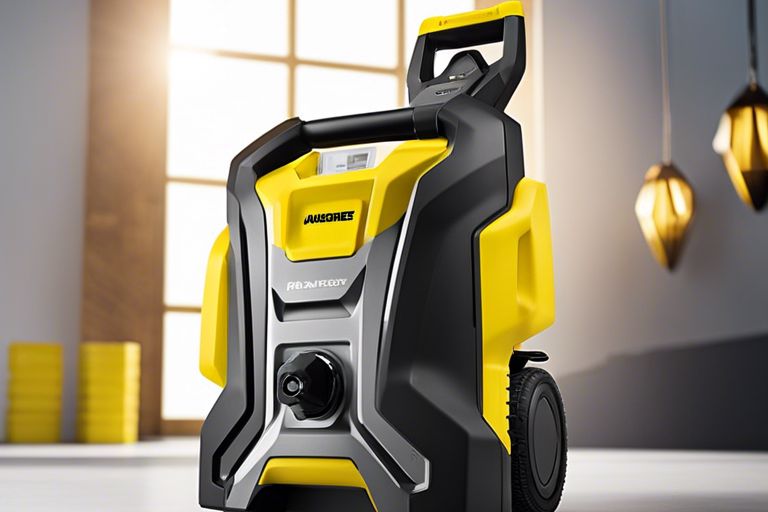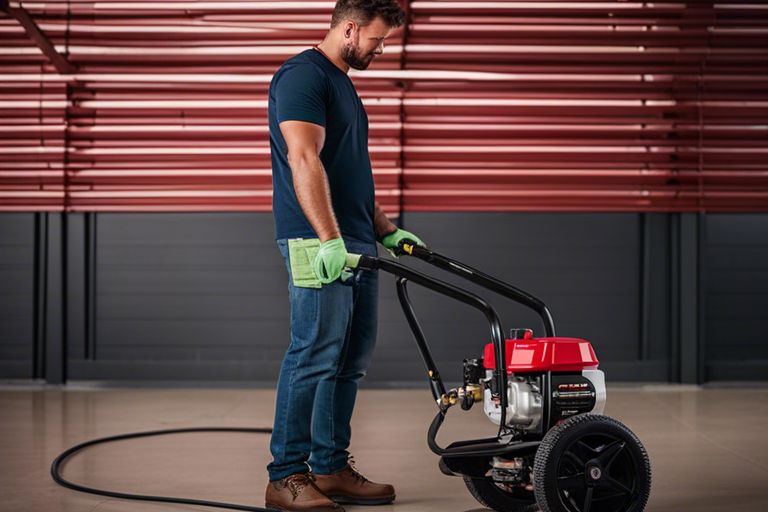With the rise of DIY trends, many homeowners are faced with the decision of whether to tackle home improvement projects themselves or hire professional help. In this informative comparison, we will explore the pros and cons of both DIY and professional installation to help you determine which option is best suited for your specific needs and skill level. Whether you’re considering installing a new kitchen backsplash or upgrading your home security system, we’ll provide valuable insights to guide you in making the right choice.
Contents
- 1 Defining DIY and Professional Installation
- 2 Assessing Your Skills and Resources
- 3 Weighing the Pros and Cons of DIY Installation
- 4 The Advantages of Professional Installation
- 5 Factors to Consider When Choosing Between DIY and Professional
- 6 Common DIY Installation Mistakes to Avoid
- 7 When to Opt for Professional Installation
- 8 The Role of Technology in DIY Installation
- 9 Balancing Independence and Dependence in DIY Projects
- 10 Professional Installation: What to Expect
- 11 DIY Installation: Tips and Tricks for Success
- 12 The Environmental Impact of DIY vs. Professional Installation
- 13 The Future of Installation: Trends and Innovations
- 14 Conclusion
- 15 FAQ
Defining DIY and Professional Installation
The Rise of DIY Culture
To understand the debate between DIY and professional installation, it’s crucial to grasp the rise of DIY culture. DIY, short for “do it yourself,” has gained popularity in recent years due to the accessibility of information and resources online. From home improvement projects to assembling furniture, many people now prefer to tackle tasks on their own rather than hiring professionals.
The Benefits of Professional Expertise
On the other hand, professional installation offers a different set of advantages. Professionals bring years of experience and specialized skills to the table, ensuring that the job is done efficiently and accurately. Whether it’s installing a new appliance or setting up a complex system, professionals have the expertise to handle the task with precision and expertise.
Professional installations often come with warranties or guarantees, providing peace of mind to the customer. Additionally, professionals have access to tools and equipment that may not be readily available to the average DIYer, further ensuring a high-quality result.
Assessing Your Skills and Resources
Evaluating Your DIY Abilities
There’s a certain level of skill and knowledge required to successfully complete a DIY home improvement project. Before deciding whether to tackle the installation yourself or hire a professional, it’s important to honestly assess your abilities. Consider factors such as your comfort level with using tools, following instructions, and problem-solving skills.
Your previous experience with similar projects can also be a good indicator of whether you have the necessary skills to complete the installation. If you find yourself feeling overwhelmed at the thought of taking on the project or if you lack the confidence in your abilities, it may be best to leave it to the professionals.
Considering Your Budget and Time Constraints
Any home improvement project requires careful consideration of both budget and time constraints. DIY installations may seem cost-effective at first glance, but it’s important to factor in the cost of tools, materials, and the potential for making mistakes that could end up costing more in the long run. Additionally, consider the time commitment required to complete the project.
Your budget and availability of time are crucial factors in determining whether a DIY or professional installation is the best choice for you. If you have a strict budget and a limited amount of time to dedicate to the project, hiring a professional may be the most efficient and cost-effective option in the long term.
Weighing the Pros and Cons of DIY Installation
Cost-Effectiveness and Flexibility
Flexibility is a significant advantage of opting for a DIY installation. You can work on the project at your own pace, fitting it into your schedule whenever convenient. Additionally, DIY installations often come with cost savings since you won’t have to pay for professional labor.
| Pros | Cons |
| Cost savings | Time-consuming |
| Flexibility in scheduling | May lack expertise |
Potential Risks and Liabilities
An imperative consideration when launching on a DIY installation project is the potential risks and liabilities involved. While the sense of accomplishment can be rewarding, DIY installations may lack the professional touch. This could lead to safety hazards or malfunctioning equipment, resulting in costly repairs or replacements.
| Pros | Cons |
| Sense of achievement | Potential safety hazards |
| Independence in project completion | Risk of malfunctioning equipment |
Another critical aspect to consider when weighing the pros and cons of DIY installation is the level of expertise required for the project. While some installations may be straightforward and manageable for an average homeowner, others can be complex and demand specialized skills. It’s imperative to assess your capabilities realistically and determine whether the task at hand aligns with your skill set.
The Advantages of Professional Installation
Many homeowners opt for professional installation when it comes to home improvement projects for various reasons. From expertise and quality workmanship to warranty and support, there are several benefits to hiring professionals for your installation needs.
Expertise and Quality Workmanship
Workmanship is one of the key advantages of professional installation. Experienced professionals bring expertise and precision to the job, ensuring that your project is completed to the highest standards. Their attention to detail and knowledge of best practices can result in a finished product that is not only functional but also aesthetically pleasing. Additionally, professional installers have access to specialized tools and equipment that may not be readily available to DIY enthusiasts, further enhancing the quality of the work.
Warranty and Support
For homeowners, one of the significant advantages of professional installation is the warranty and support that often comes with the service. Most professional installers offer some form of guarantee on their work, providing you with peace of mind in case any issues arise after the project is completed. Additionally, many companies provide ongoing support and assistance, ensuring that you can easily address any concerns or questions that may arise post-installation.
Plus, professional installers are typically well-versed in building codes and regulations, ensuring that your project meets all necessary requirements. This can save you time and potential headaches down the line, as any errors or issues that arise from non-compliance can be costly to rectify.
Factors to Consider When Choosing Between DIY and Professional
Your choice between DIY and professional installation should consider several factors. Here are some key considerations:
Complexity of the Project
Choosing whether to tackle a project yourself or hire a professional often depends on the complexity of the task at hand. If the project involves intricate details, specialized tools, or specific technical skills, it may be best to leave it to the professionals. On the other hand, simpler projects that require minimal expertise and can be easily completed with basic tools may be suitable for a DIY approach.
- Consider your own skill level and experience in similar projects.
- Evaluate the complexity of the task and whether you have the necessary knowledge and tools.
After assessing these factors, you can make an informed decision on whether to proceed with a DIY installation or seek professional assistance.
Urgency and Timeliness
Professional installation can often be more efficient in terms of time and speed. If you have a tight deadline or need the project completed quickly, hiring a professional may be the best option. Professionals have the expertise and resources to complete the job efficiently, saving you time and ensuring timely completion of the project.
Understanding the urgency of your project and the time constraints involved can help you determine whether DIY or professional installation is the most suitable choice for you.
Common DIY Installation Mistakes to Avoid
Inadequate Planning and Preparation
Despite the excitement of starting a DIY project, it’s crucial not to rush into it without proper planning and preparation. An overlooked step or skipped detail could lead to costly mistakes down the line. Take the time to research and understand the project requirements, gather all necessary tools and materials, and create a detailed plan before diving in.
Insufficient Tools and Materials
Mistakes in DIY projects often occur when individuals do not have the right tools and materials on hand. Whether it’s using the wrong type of screws or not having the proper safety equipment, not having the necessary items can lead to frustrations and compromised results. Make sure to invest in quality tools and materials specific to your project to ensure a smooth installation process.
Additionally, having to stop midway through a project to run to the store for missing items can disrupt your workflow and lead to a disjointed final outcome. A well-stocked toolbox and adequate supplies can save you time and energy in the long run.
When to Opt for Professional Installation
High-Stakes Projects Requiring Specialized Knowledge
To tackle high-stakes projects that demand specialized knowledge, it’s crucial to enlist the expertise of professional installers. Whether it’s electrical work, intricate plumbing systems, or intricate structural modifications, these projects require a level of precision and understanding that can only be provided by professionals. Safety is paramount in such scenarios, and professionals have the training and experience to navigate potential hazards and complexities.
Large-Scale or Complex Installations
Projects that are large-scale or highly complex, such as roofing replacements, intricate HVAC system installations, or major structural renovations, are best left to professional installers. These tasks involve a multitude of components and potential challenges that can arise during the installation process. Professionals are equipped to handle these complexities efficiently and effectively, ensuring that the project is completed with the highest level of quality and craftsmanship.
Pertaining to large-scale or complex installations, the intricate nature of the work demands a keen eye for detail and a deep understanding of the specific requirements involved. Professional installers have the training and skills to navigate these challenges and deliver results that meet the highest standards.
The Role of Technology in DIY Installation
Once again, technology has revolutionized the way we approach tasks, including home installation projects. With the help of online tutorials, specialized software, and tools, even individuals with minimal experience can tackle DIY projects with confidence.
Online Tutorials and Guides
Installation tutorials and guides available online provide step-by-step instructions, tips, and visuals to assist DIYers throughout the process. Whether you’re installing a new smart thermostat or setting up a home security system, these resources can be invaluable in ensuring a successful outcome.
Specialized Software and Tools
DIY installation projects can be made easier and more efficient with the use of specialized software and tools. From design software for planning out room layouts to specific tools for mounting shelves or drilling holes, technology has made it possible for DIYers to achieve professional-looking results.
The availability of these resources empowers individuals to take on home improvement projects that may have seemed daunting in the past. With the right technology on hand, DIY installation becomes not only feasible but also rewarding, allowing homeowners to customize their living spaces to their liking.
Balancing Independence and Dependence in DIY Projects
After deciding to take on a do-it-yourself project, it’s important to find the right balance between independence and dependence. While there is a sense of satisfaction that comes from completing a project on your own, knowing when to ask for help can make a world of difference in the final result.
Knowing When to Ask for Help
When tackling a DIY project, it’s imperative to recognize your limitations. If you find yourself struggling with a particular step or aspect of the project, don’t hesitate to reach out for assistance. Whether it’s consulting online resources, asking a friend with experience, or even hiring a professional for guidance, seeking help when needed can prevent costly mistakes and ensure the project turns out as planned.
Building a Support Network
Projects can often become overwhelming, especially for those new to the world of DIY. Building a support network of friends, family, or online communities can provide valuable insight, advice, and encouragement throughout the project. Having a group of individuals who can offer guidance or lend a helping hand when needed can make the process more enjoyable and increase the likelihood of success.
Help can come in many forms, whether it’s someone to bounce ideas off of, a resource for troubleshooting, or a pair of extra hands during a challenging step. By creating a support network for your DIY endeavors, you can enhance your skills, build confidence, and ultimately achieve the results you desire.
Professional Installation: What to Expect
Unlike DIY projects where you are in full control, hiring professionals for installation comes with a different set of expectations. Communication and project management are key components when it comes to professional installation.
Communication and Project Management
Installation professionals will ensure that there is clear communication throughout the process. They will keep you informed about the timeline, any potential delays, and any decisions that need to be made. Project management is crucial to ensure that the installation is completed efficiently and to the highest standards.
Quality Control and Assurance
For professional installations, quality control and assurance play a significant role. Professionals will ensure that the installation is done correctly and meets industry standards. They will conduct thorough inspections to guarantee that the final product is of the highest quality.
This ensures that the installation is not only visually pleasing but also functional and safe for use. Professionals take pride in their work and will go the extra mile to make sure that everything is up to standard before completing the project.
DIY Installation: Tips and Tricks for Success
All DIY enthusiasts know the satisfaction that comes from completing a project with their own two hands. Whether you’re a seasoned DIY-er or just starting out, tackling a home installation project can be both exciting and daunting. Here are some tips and tricks to help you navigate the DIY installation process successfully.
Research and Planning Strategies
One crucial aspect of a successful DIY installation project is thorough research and planning. Before you begin, make sure to gather all the necessary information, including instruction manuals, video tutorials, and tips from other DIY-ers. Take the time to understand the steps involved and create a detailed plan to guide you through the process. By investing time in research and planning, you can avoid common pitfalls and ensure a smoother installation experience.
- Start by measuring the space accurately and gathering all the tools and materials you’ll need.
- Consult online forums and communities for advice and recommendations from experienced DIY-ers.
- Break down the project into smaller tasks and set realistic deadlines for each step to stay on track.
Troubleshooting Common Issues
One of the challenges of DIY installation is dealing with unexpected issues that may arise during the process. To effectively troubleshoot common problems, it is imperative to stay calm and approach the situation with a problem-solving mindset. Strategies such as double-checking measurements, seeking help from online resources, and consulting with experts can help you overcome hurdles and continue with the installation.
The key to successfully troubleshooting common issues is not to panic but to approach the problem methodically. Step back, assess the situation, and consider alternative solutions to find the best way forward. By remaining patient and persistent, you can tackle challenges head-on and complete your DIY installation project with confidence.
The Environmental Impact of DIY vs. Professional Installation
Now let’s examine into the environmental impact of DIY versus professional installation. When considering sustainability and eco-friendliness, both options have their pros and cons.
Sustainability and Eco-Friendliness
Installation of products by a professional often results in a more sustainable outcome. Professionals are trained to minimize waste, use energy-efficient tools, and follow eco-friendly practices. On the other hand, DIY installations may lead to higher energy consumption and an increased carbon footprint if not done correctly.
Waste Reduction and Recycling
EcoFriendliness plays a significant role in waste reduction and recycling. Professionals are more likely to properly dispose of materials and recycle waste, contributing to a greener environment. DIY projects, on the other hand, may result in more waste being sent to landfills if recycling options are not readily available.
Recycling materials such as cardboard, plastic packaging, and old fixtures can make a difference in reducing the environmental impact of home improvement projects. By choosing professional installation, you can ensure that materials are disposed of responsibly and recycled whenever possible.
The Future of Installation: Trends and Innovations
Emerging Technologies and Materials
Not only is the installation landscape evolving with new technologies and materials, but these advancements are also revolutionizing the way projects are approached. From smart home integration to eco-friendly materials, there are a plethora of options for those looking to upgrade their living spaces.
Changing Consumer Behaviors and Expectations
Emerging trends in consumer behaviors and expectations are shaping the installation industry. Today’s consumers are more informed and tech-savvy than ever before, which is driving the demand for convenient and efficient installation processes. As a result, installers are adapting their services to meet these changing needs and provide a more seamless experience for their customers.
Behaviors such as online research, reviews, and the desire for personalized solutions are influencing how installations are carried out. Consumers now expect transparency, reliability, and a high level of professionalism from installation services. This shift in expectations is pushing companies to innovate and deliver top-notch services to stay competitive in the market.
Conclusion
Ultimately, the decision between DIY and professional installation depends on several factors such as your skill level, budget, and the complexity of the project. If you have experience, time, and the necessary tools, DIY can be a cost-effective and satisfying option. However, if the project is intricate, requires specialized knowledge, or could pose safety risks, it’s best to hire a professional to ensure the job is done correctly and efficiently.
Both DIY and professional installation have their pros and cons, and the best choice for you will depend on your unique circumstances. Before making a decision, carefully consider the complexity of the project, your skill level, and the potential risks involved. By weighing these factors, you can confidently choose the installation method that best suits your needs and requirements.
FAQ
Q: What are the benefits of DIY installation?
A: DIY installation allows you to save money on labor costs and gives you the satisfaction of completing a project on your own. It also gives you full control over the process and allows you to work on your own schedule.
Q: What are the advantages of professional installation?
A: Professional installation ensures high-quality workmanship, expertise, and efficiency. Professionals have the skills and experience to tackle complex installations and can provide warranties or guarantees for their work.
Q: How do I decide between DIY and professional installation?
A: When deciding between DIY and professional installation, consider factors such as your budget, time constraints, the complexity of the project, and your level of expertise. If you’re confident in your skills and have the time to dedicate to the project, DIY may be the best option. However, if the project is complex or requires specialized knowledge, it’s best to hire a professional to ensure a successful outcome.












